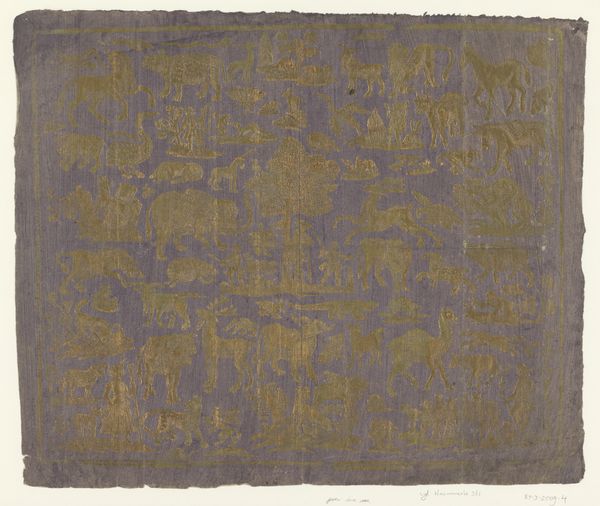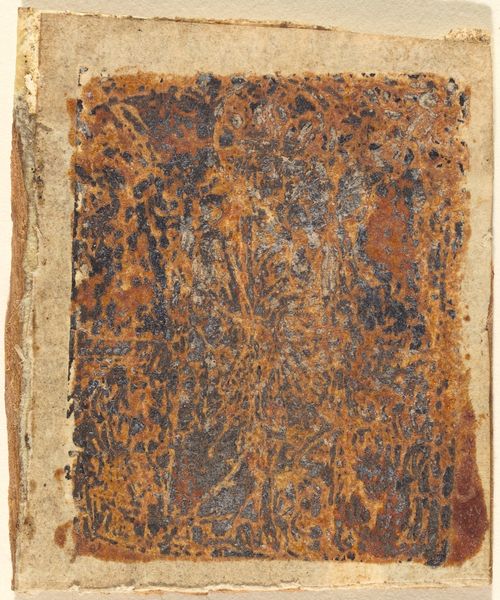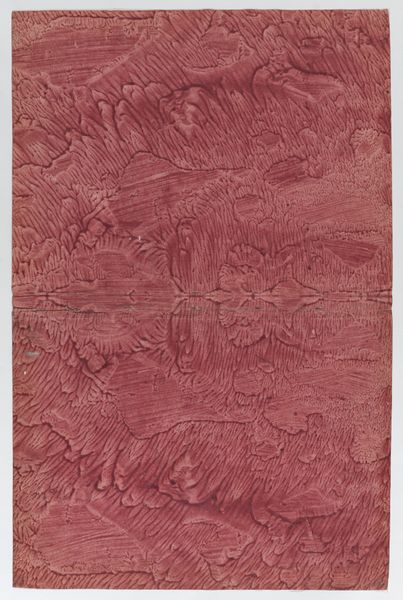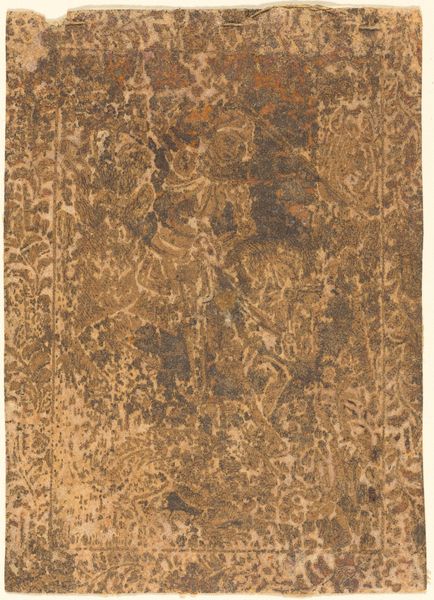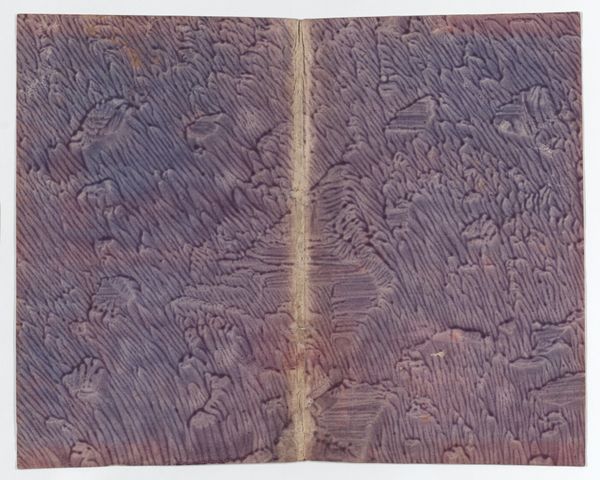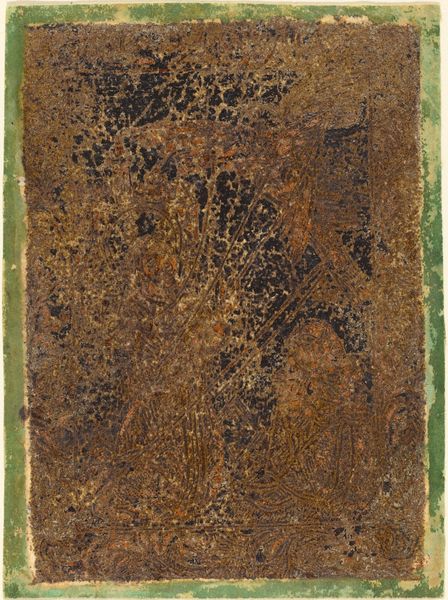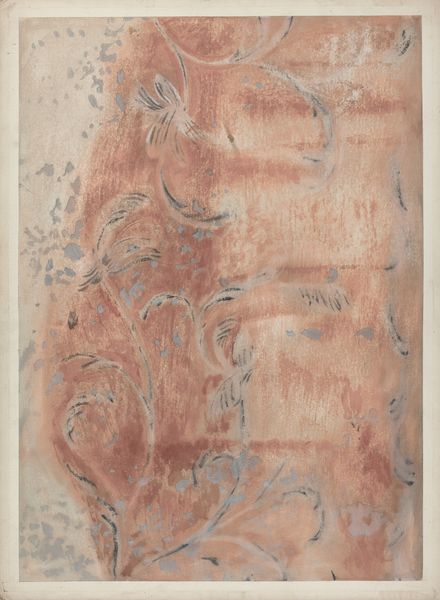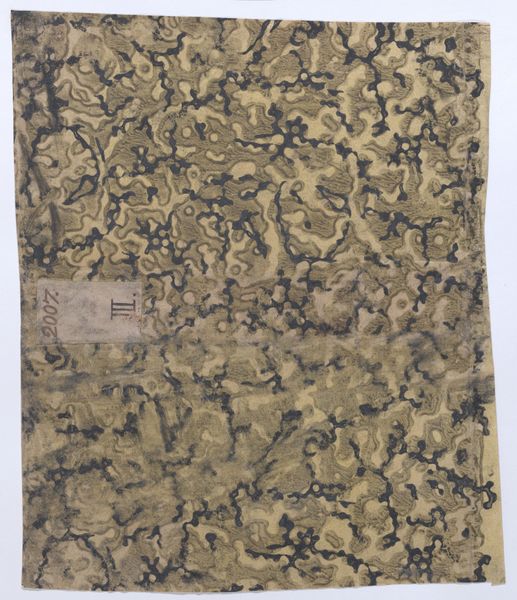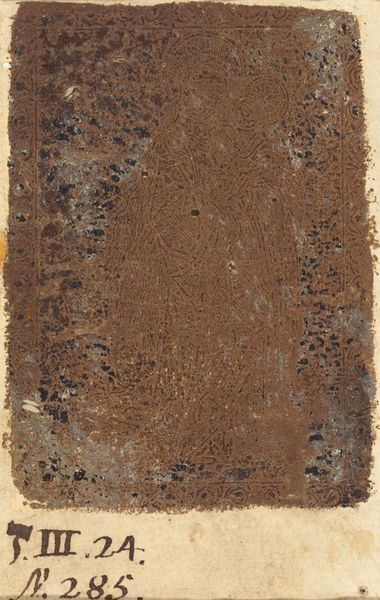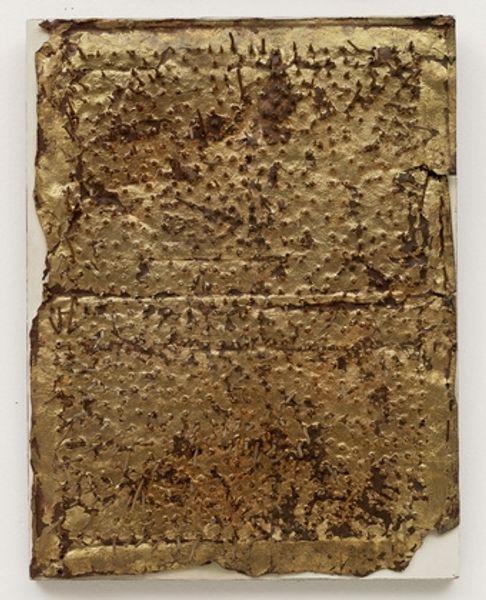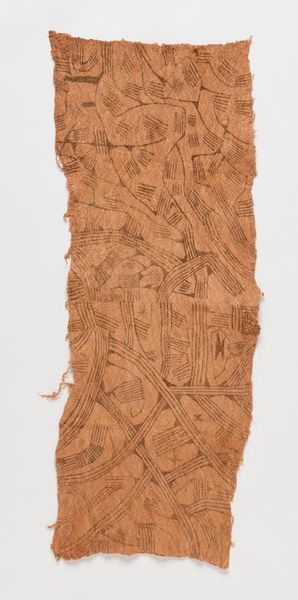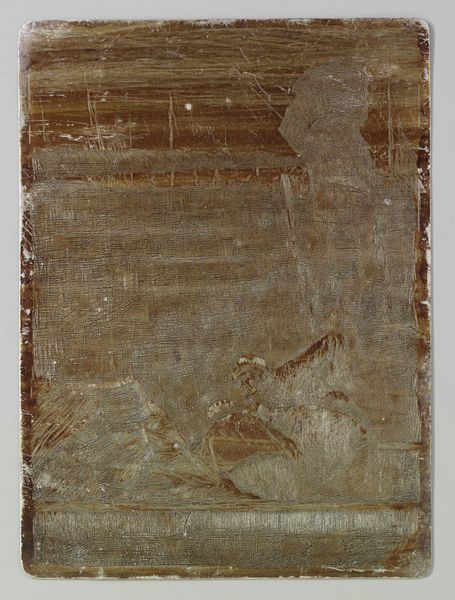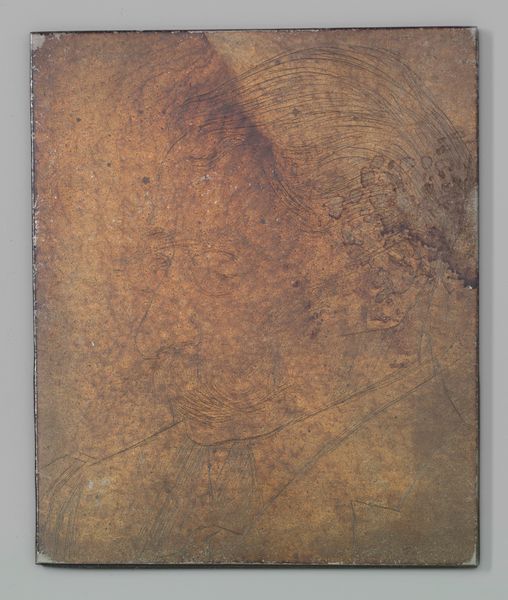
Sheet with figures in landscapes in red, purple, and yellow 1700 - 1800
0:00
0:00
drawing, print
#
drawing
#
toned paper
#
water colours
# print
#
landscape
#
figuration
#
orientalism
#
genre-painting
Dimensions: Sheet: 9 1/4 × 7 3/16 in. (23.5 × 18.3 cm)
Copyright: Public Domain
Curator: Up next we have a work called “Sheet with figures in landscapes in red, purple, and yellow,” made anonymously sometime in the 18th century. It’s a drawing made with watercolors, using print on toned paper. What are your initial impressions? Editor: It has a faded, dreamlike quality. The layering of colours creates a dense landscape with hidden figures, almost like a memory fading away. Curator: Absolutely. When considering process, it’s fascinating how the use of print and watercolor interacts. It looks mass produced and handmade all at once. Editor: Yes, and that tension reflects the complex relationship between Europe and Asia at the time. The piece borrows imagery from what was then considered the ‘Orient,’ repackaging and representing these cultures, contributing to their exoticization. Curator: Good point. Considering the circulation of such imagery, how might the choice of a relatively cheap and easily reproducible medium—watercolor print on paper—impact our understanding? It was likely meant for consumption on a broader scale, a sort of mass produced Orientalism. Editor: Precisely. And who was consuming this? Primarily the European middle and upper classes eager to engage with the 'exotic' without firsthand experience. This speaks volumes about access and power. It is all artifice but sold to audiences as the real experience. Curator: Indeed. And speaking of the figures themselves—notice their relative scale in relation to the landscapes they inhabit. It seems to further emphasize their otherness and their place in the world as merely spectacle. The way they inhabit but do not define it. Editor: These landscapes themselves were also shaped by colonial ambitions. Representing territory, resources to be extracted, and people to be governed. Curator: The use of red, purple, and yellow watercolor washes lends the piece a unique luminosity, something ethereal even with such mass-produced means. It gives you pause when considering the intentions behind its making and circulation. Editor: Right. Understanding it in its historical and social context helps unpack the ideologies embedded in this seemingly innocent landscape. Curator: I’ll admit I now appreciate the material accessibility and wide circulation of the piece a little less, acknowledging it contributes to these skewed perspectives through ease of dissemination. Editor: Recognizing that even the most beautiful of objects can participate in harmful practices. Thank you for shifting my perspective too.
Comments
No comments
Be the first to comment and join the conversation on the ultimate creative platform.
